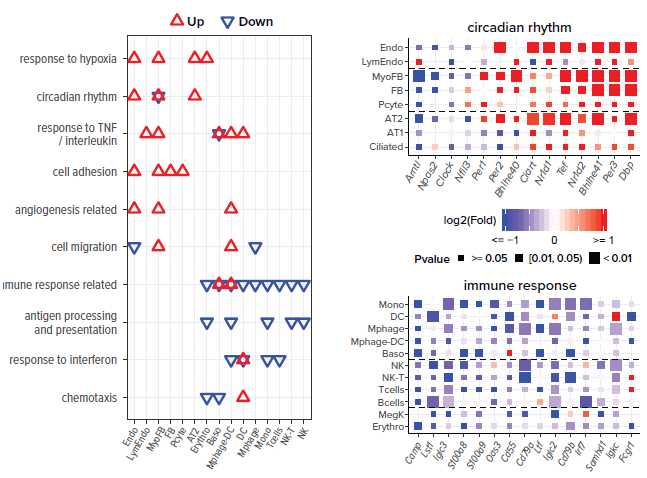Single-Cell Analysis Shines Light on Early Sleep Apnea Influences on Lung Development
Published February 2021 | eLife
Childhood sleep apnea can have significant cardiovascular, neurological, and metabolic consequences. Now, a study detailing how specific cell types within the lung respond to the intermittent hypoxia caused by sleep apnea suggests a variety of novel targets for treatments that may limit the damage.
A team of experts at Cincinnati Children’s led by first authors Gang Wu, PhD, Divisions of Human Genetics and Immunobiology, graduate student Yin Yeng Lee, and senior author David Smith, MD, PhD, Division of Otolaryngology, used single-cell RNA sequencing to explore a host of gene changes occurring in 19 cell types including endothelial cells, myofibroblasts, ciliated cells and immune cells.
The team did not find comprehensive organ-wide changes in lung samples. But they did detail a series of cell type-specific changes including dysregulation of circadian gene expression and increased expression of RNAs associated with angiogenesis and pulmonary hypertension.
“Our findings suggest that circadian clock dysfunction may be an important early-stage consequence of hypoxia-driven disease and may contribute to downstream processes,” the co-authors state.
Importantly, the findings also suggest potential cell type-specific approaches for improving care.
“If obstructive sleep apnea does, in fact, lead to fibrotic changes in the lung, targeting FGF pathways in alveolar epithelial cells could prevent disease progression from intermittant hypoxia,” the co-authors say.
The paper includes 11 co-authors from six research divisions at Cincinnati Children’s, including John Hogenesch, PhD, co-founder of the Center for Circadian Medicine, and Jeffery Whitsett, MD, co-director of the Perinatal Institute.
More research is planned to explore how sleep apnea affected gene expression profiles change over time, which cell types drive disease progression from early to late IH exposure, and how early insults from hypoxia may also drive damage in other organ systems.
How Sleep Apnea Can Affect Gene Expression
Diverse expression pathways were up- and downregulated in the presence of intermittent hypoxia (IH). (A) Biological processes enriched in different cell types from lungs of mice exposed to IH vs controls. Biological processes enriched in up- and downregulated genes are indicated in red and blue triangles, respectively. (B) Expression variation of well-established genes involved in circadian rhythm for endothelial, epithelial, and mesenchymal cells. (C) Expression variation of well-established genes involved in immune response for immune-associated cells.






